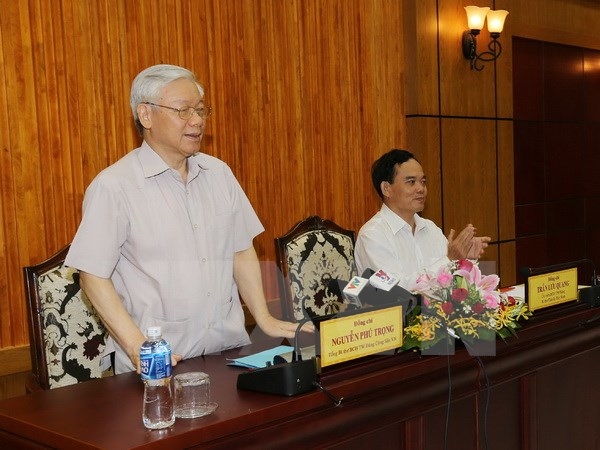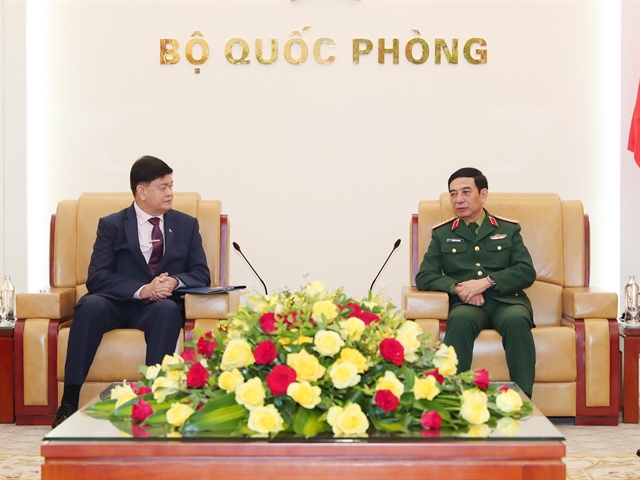 Politics & Law
Politics & Law

The southern province of Tây Ninh needs proper strategies to fully tap its potential and advantages for socio-economic development, Party General Secretary Nguyễn Phú Trọng said during his two-day working trip to the locality which ended yesterday.
 |
| The southern province of Tây Ninh needs good strategies to fully tap its potential for socio-economic development, Party General Secretary Nguyễn Phú Trọng said during his two-day working trip to the locality which ended yesterday.— VNA/VNS Photo Trí Dũng |
TÂY NINH — The southern province of Tây Ninh needs good strategies to fully tap its potential for socio-economic development, Party General Secretary Nguyễn Phú Trọng said during his two-day working trip to the locality which ended yesterday.
With 240km of border with Cambodia and Mộc Bài and Xa Mát international border gates, Tây Ninh holds a strategic position for the national economy, defence-security and diplomacy, he stressed.
The favourable topography and transport network enable Tây Ninh to develop agriculture, industry, services, tourism and external economy, he said, urging the province to focus on these sectors.
As a gateway to the south-western part of the country, Tây Ninh should promote external affairs and maintain security in the border areas as well as build border lines of peace, friendship and co-operation, take good care of Vietnamese returning from Cambodia, and create optimal conditions for Vietnamese firms in Cambodia.
The province needs to raise the efficiency of mass mobilisation work, he said.
Equally important is developing high-quality human resources, the Party chief said, highlighting this as one of three strategic breakthroughs in addition to improving institutions and mordernising socio-economic infrastructure.
He hailed Tây Ninh for realising the Resolution adopted at the 11th Central Committee’s fourth plenum on Party-building.
He also agreed on local proposals to create stronger regional connectivity, improve transport infrastructure and facilitate business operation.
Tây Ninh recorded a gross domestic product (GDP) growth of 11.1 per cent in the first five months of 2016 and collected more than VNĐ2.8 trillion (US$126 million) for the State budget, a year-on-year rise of 10.9 per cent.
The per capita average income is estimated at $2,600. The ratio of impoverished households was reduced to 4.32 per cent in comparison to the country’s average level – 6.75 per cent. — VNS




